MCD-Level-1 MuleSoft Certified Developer - Level 1 (Mule 4) Free Practice Exam Questions (2025 Updated)
Prepare effectively for your MuleSoft MCD-Level-1 MuleSoft Certified Developer - Level 1 (Mule 4) certification with our extensive collection of free, high-quality practice questions. Each question is designed to mirror the actual exam format and objectives, complete with comprehensive answers and detailed explanations. Our materials are regularly updated for 2025, ensuring you have the most current resources to build confidence and succeed on your first attempt.
What is the difference between a subflow and a sync flow?
How would you debug Mule applications?
A Batch Job scope has five batch steps. An event processor throws an error in the second batch step because the input data is incomplete. What is the default behavior of the batch job after the error is thrown?
Where is metadata stored in a Mule project
Refer to the exhibit.
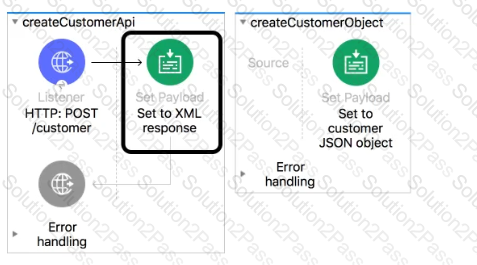
What is the correct DataWeave expression for the Set Payload transformer to call the createCustomerObject flow with values for the first and last names of a new customer?
An API was designed in API Designer, published to Anypoint Exchange, then imported into API Manager.
A Mule application implements this API and is deployed to CloudHub. API Manager manages this deployed API implementation.
What is the easiest and most idiomatic (used for its intended purpose) way to enforce a Client ID Enforcement policy on this Mule application?
A mule project contains MySQL database dependency . The project is exported from Anypoint Studio so that it can be deployed to Cloudhub. What export options needs to be selected to create the smallest deployable archive that will successfully deploy to Cloudhub?
As a part of requirement , application property defined below needs to be accessed as dataweave expression. What is the correct expression to map it to port value?
Correct answer is {customerID}.
Refer to the exhibit. The input array of strings is passed to the batch job, which does NOT do any filtering or aggregating. What payload is logged by the Logger component?

What is the object type returned by the File List operation?
Refer to the exhibits.

What DataWeave expression transforms the conductorIds array to the XML output?
A Mule project contains a DataWeave module like WebStore.dwl that defines a function named loginUser. The module file is located in the project's src/main/resources/libs/etl folder.
What is correct DataWeave code to import all of the WebStore.dwl file's functions and then call the loginUser function for the login "Todd.Pal@mulesoft.com"?
Which file is used to define the interface contract to invoke a web service implemented as a SOAP service
How we can scale deployed Mule application vertically on cloudhub?
Refer to the exhibits.
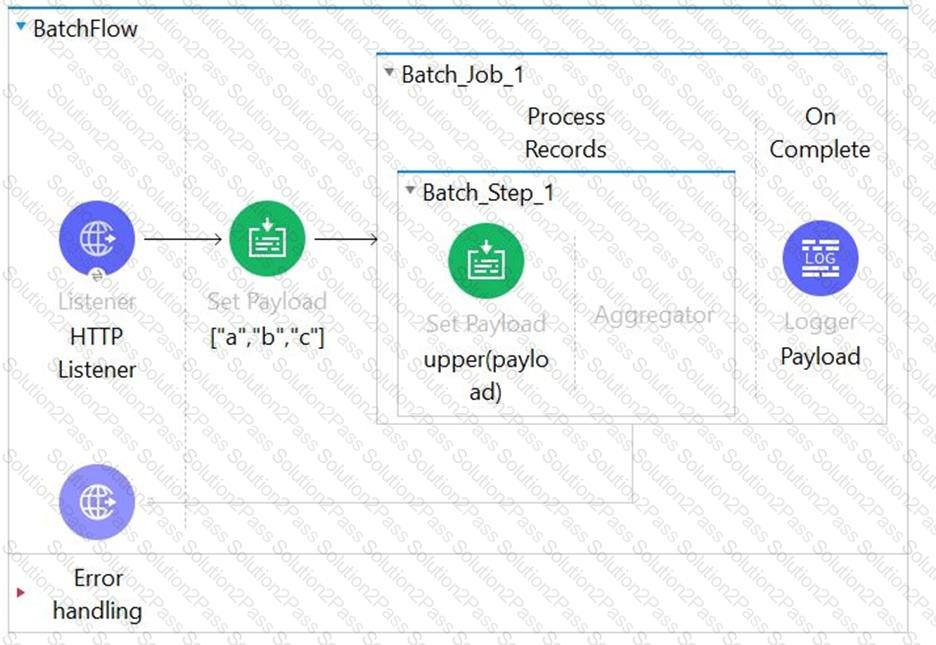

The Batch job processes an array of strings.
What information is logged by the logger component after the batch job scope completes processing of the input payload?
According to Semantic Versioning, which version would you change for incompatible API changes?
How are multiple conditions used in a Choice router to route events?
Refer to the exhibit.
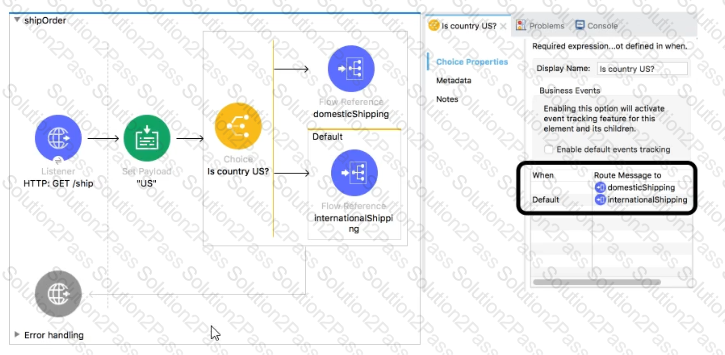
What is a valid expression for the Choice router’s when expression to route events to the documenticShipping flow?
Refer to the exhibit.
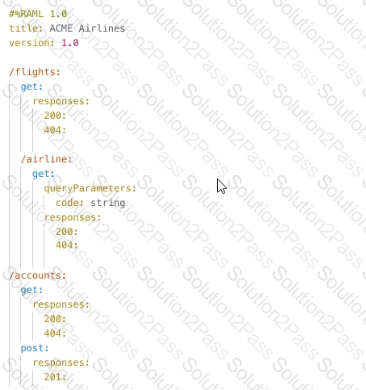
How many private flows does APIKIT generate from the RAML specification?
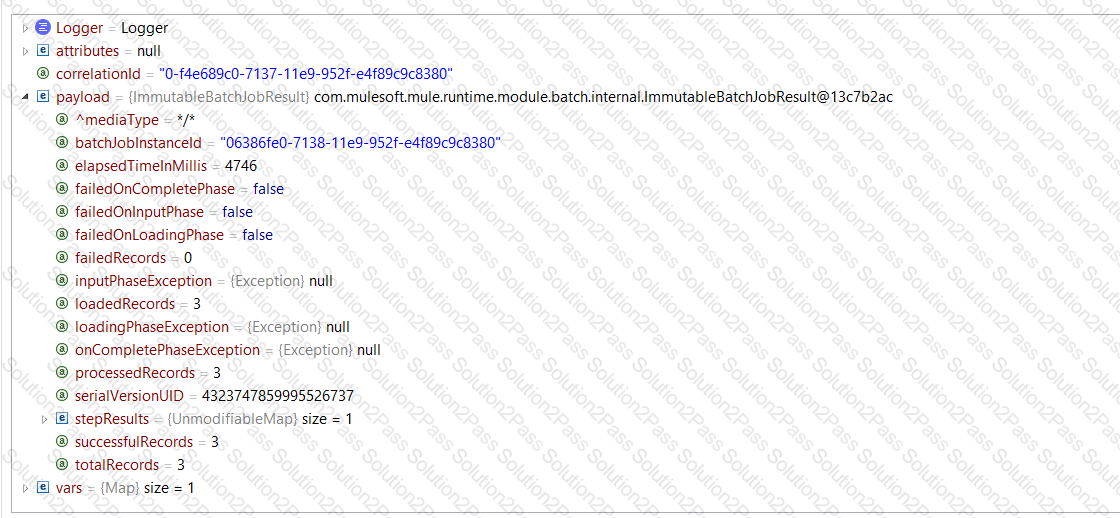
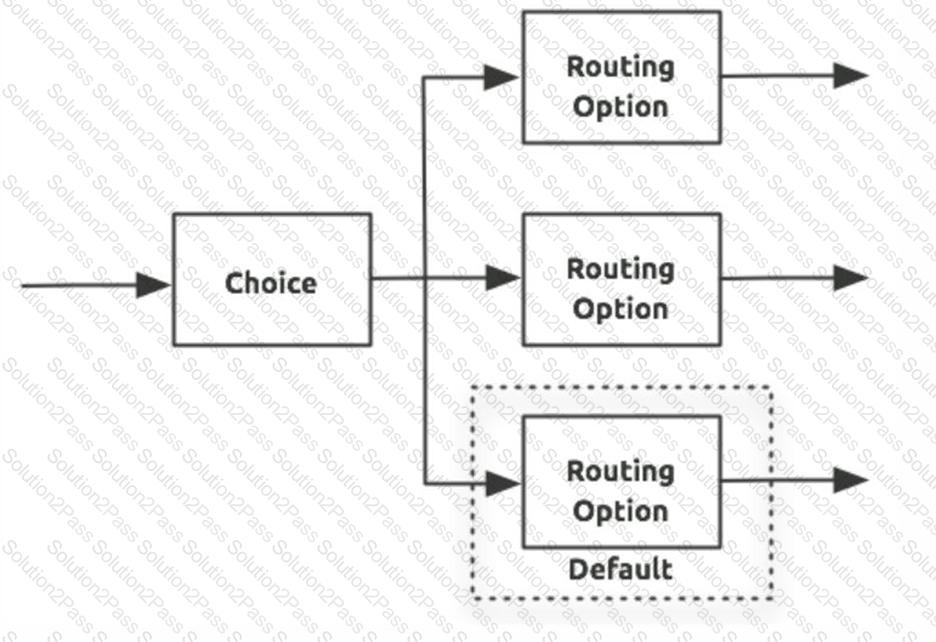 Diagram
Description automatically generated
Diagram
Description automatically generated